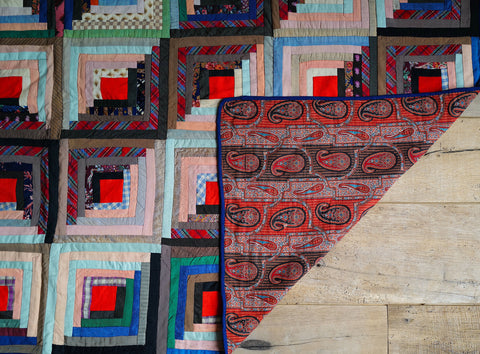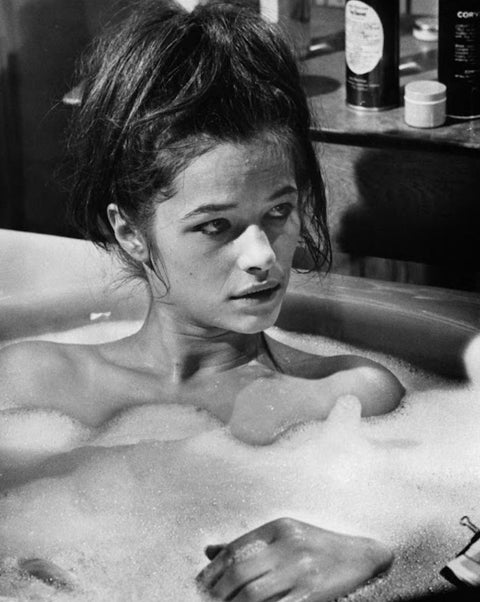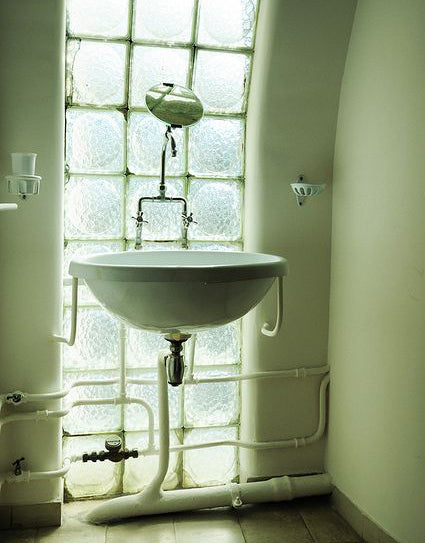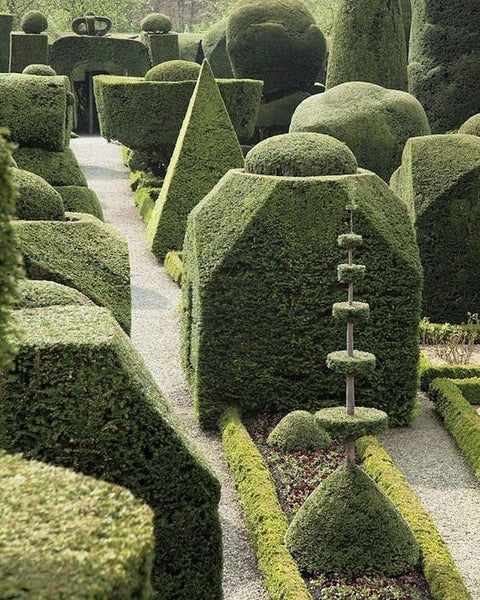
QUILTS: EXPLORING THE HISTORY OF THE FORM
Quilting, an integral facet of American history and culture, was born out of necessity. The early settlers in America would deftly and economically patch worn materials to repurpose and reuse. As manufacturers began to develop fabric on a greater and cheaper scale, quilting’s initial utilitarian purpose extended, and a time-honoured, artistic type of quilting practice emerged.
Late 17th and 18th century American quilts are decorative webs of cerebral and corporeal muscle flexes that expound the talents of their maker. The textiles are cherished as heirlooms in homes and museums and are historical documents that intimately speak to their social and historical landscape.
Predominantly a domestic chore, quilting is a testament to the women who built and nurtured American homes. Precluded from the fine arts, the practice presented women with a way in which they could channel their creativity to find a self-expression that was otherwise stifled.

Quilts equally became the creative articulation for enslaved women to assert some semblance of agency, identity, and legacy. In this context, quilts were deeply and vitally embedded in the social fabric of their time. The Log Cabin quilt holds a particularly charged cultural significance; in the time of the Underground Railroad, they were hung on windowsills to signify a safe refuge in which an enslaved person could seek shelter.

Since the nineteenth century, the residents of Gee’s Bend have crafted evocatively patterned and dynamically charged quilts. The rural community are direct descendants of the enslaved people who worked on the cotton plantation established there in 1891. From this troubled period in American history, a rich quilting tradition developed – mother, grandmother, and neighbours quilting together in meditative unity, each deft movement of the wrist and each masterful stitch of the needle connecting the quilter to their identity, history, and culture. Quilts emerging from Gee’s Bend have gone on to constitute a crucial chapter in the history of American art; from an aesthetic standpoint, they embody several distinctive and unorthodox styles, reflective of the women who made them and their love for certain colours and cloths.

Encoded in each quilt is a history that often goes amiss today. The artworks throw light on a poignant struggle for expression that unapologetically emerges from the social arena and highlights the ways in which a marginalized and oppressed social demographic overcame invisibility through this ritualistic and communal act.
"Quilts are good at holding stories, even difficult ones. No matter how luxuriously a quilt may have been made, it is still fundamentally a useful object that offers care and security. Like the surface of a land tended by willing hands, a quilt provides regenerative care as it is passed down through generations."
Jess Bailey, Racial Justice is Land Justice, Tatter Issue 2: Earth
The Art of Quiltmaking

The networks of fabric are veritable works of arts despite the unfounded perception that the practice required a less valuable skillset than the typically ‘masculine’ art – narrative and historical oil paintings and sculpture, for instance – that was being produced at the time. The finely quilted works demonstrate an acute and masterly awareness of colour composition, graphic arrangement, and an unwavering attention to detail – some designs being so elaborate they took years to produce.
The creation of complex quilts composed of many small pieces of cloth and required systematic organization. A template was often used for laying the foundation of the design unit, perhaps composed of squares, diamonds, or hexagons. The template ensured an even and regular unit size that enabled the quilter to join many pieces of fabric, adhering to their overall design arrangement.
Appliqué quilts were constructed in a more versatile manner, enabling the sewer to compose complex visual patterns with multiple layers of solid colour and printed fabrics, creating depth and artful play across the overall composition.
Quilting was a communal process in which women would come together to exchange ideas. Each quilt eschews the idea of the lone artist and instead celebrates both the need and benefits of collaboration. In this way, the art of quilting is multigenerational. The techniques were passed on to younger women by elders who preserved the legacy of their family, community, and culture.
The practice has been evocatively mechanised by modern and contemporary artists. Women such as Anni Albers who entered the Bauhaus textile and weaving workshop spearheaded one of the most collaborative, experimental, and commercially successful sectors of the institution. The artists turned to textiles and needlework to transform the future of abstract art and further embed the medium in the fine art canon.
More recently, contemporary artists such as Alighiero Boetti have traced the poetic and subversive use of the textile medium. In White Cube’s group exhibition ‘Losing the Compass’, Alighiero Boetti celebrated the work of local Afghan embroiders who collaborated with the artist to create ludic surfaces that confound notions of art, craft, individual expression, and anonymous production.

Words by Isabella Bragoli








